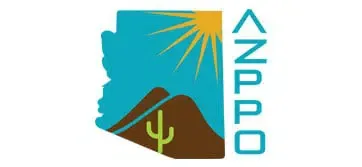Weed Control Service in Phoenix, AZ
Try as you might to control weeds, they seem to constantly invade desert landscaping and lawns. In short order the result can be an area full of ugly weeds instead of the beautiful landscape you want and removing them can be very expensive.
There are typically three ways to control weeds:
- Self Help: Excellent products and spreaders are available if this is how you want to enjoy the great outdoors in your spare time… particularly in the summer months. Since weed control is never ending… well, you know.
- Traditional Landscape Maintenance Services: These services are best known as “blow and go” providers with an emphasis on daily volume. In addition to raking, mowing, and trimming they will spread some type of “weed killer” as requested. Generally, their knowledge of weeds and weed removal is rather limited so the weeds continue to return… and return, and return…
- Atomic’s Weed Division: Our Weed Division consists of experts dedicated exclusively to weed removal and your total satisfaction is guaranteed. The manufacturers whose products we use train our Weed Specialists on the latest technology and products to ensure maximum results are achieved. These products are the industries finest, most effective, and environmentally friendly.
- Atomic’s Method: A team of Weed Specialists will design and implement your treatment plan that also minimizes on-going landscape maintenance costs and includes the following:
- Pre-emergent product is typically applied bi-annually to prevent weed and unwanted grass seeds from germinating
- Post-emergent product is applied “as-needed” to kill the root systems of established weeds and unwanted grasses
Jump to a Section:
Types of Weeds in Phoenix & Arizona
Johnsongrass, Crabgrass, Stinkgrass, Nutsedge Control
- Johnsongrass is one of the most abundant and vicious throughout the United States. It thrives in open, disturbed, rich, bottom ground, mainly in cultivated fields. In Arizona, it is found along irrigation ditches, streams, and in any kind of moist waste area. Unless it is constantly controlled, johnsongrass could completely take over agricultural lands. This weed can grow as tall as 8 feet including the stem which may reach 2 ½ feet deep in the dirt. It can produce more than 80,000 seeds in a single season. The seeds easily fall to the ground and fall underneath the weed that produced them. It begins flowering at the beginning of April and continues through November.
- Large crabgrass, a native of Europe, is commonly found in southern and central Arizona. It is a weed of moist soil and is mainly a problem in cultivated fields, streams, roadsides, and lawns during the summertime. Large crabgrass is the most widespread annual grassy weed in yards and landscaped areas. The plant itself grows anywhere from 8-28 inches tall and contains many branches at the base. This weed commonly begins flowering in February and may last through summer as the weed matures late May through October.
- Stinkgrass is a very common weed found in the state of Arizona from early summer through late fall in cultivated crops, gardens, roadsides, and heavily soiled lands. It is, however, uncommon in the northeastern part of Arizona. Stinkgrass has been found to be poisonous among horses that eat large quantities of dry or fresh stinkgrass over time, although no reports have been made in Arizona. This European weed begins flowering from early May and may last through October and they may be found mixed with small grains and seeds causing an impurity among crop seeding.
- Yellow nutsedge is one of the most common weeds found in Arizona, flowering anywhere between May and November or when our fall frosts begin to arrive.
The nutsedges are the most commonly found in or near cultivated fields, covering large areas in cotton fields, alfalfa pastures, dams, and ditches. It is also very common to spot these weeds along streams and roadsides.
- The purple nutsedge is very similar to the yellow nutsedge with a few differences other than the obvious physical appearances. The purple nutsedge is mainly confined to the valleys of southern Arizona flowering at the same time as the yellow nutsedge (May –fall frost). When found in summer crops, lawns, ditch banks, and field borders; the stem, runners, and tubers make the weed almost impossible to get rid of.
London Rocket, Milk Thistle, Spiny Sow Thistle Control
- London rocket is one of the first weeds to appear in the wintertime in southern Arizona and disappears again once the climate turns hot. It is found predominately in small grains, citrus orchards, roadsides, and gardens in Arizona. London rocket is an extremely competitive winter weed and usually grows to be 2 feet tall and begins flowering in December through May.
- The milk thistle is a weed native to the Mediterranean region. It can be found in most areas in southern Arizona, most commonly in the Salt River Valley. It has a stout stem with rigid branching with a reddish-purple flowering head. Milk thistles grow along roadsides, irrigation ditches, waste areas, and has potential to invade large areas of pastureland in Maricopa, Gila, Pinal, Pima, and Cochise counties. Once the weed has established, it forms thick clumps excluding more desirable forage plants. They do have some toxic properties when growing in fertile soil; however, it is not common enough in Arizona to cause poisoning. Milk thistles flower mostly from April through June.
- Spiny Sowthistles are common weeds growing in urban areas of the Arizona deserts. It is a European weed that is abundant and serious in the southern part of the state. The sowthistle is commonly mistaken for the dandelion due to the similarities in the flowering buds. The main difference is the reddish prickly long stem reaching up to 5ft high. Their growth rate depends on the amount of rain received in winter and spring; the more rain we receive, the more they grow. Then spiny sowthistle is a pest in winter vegetable crops, orchards, lawns, waste areas, pavement, along stream and creek banks. By the time comes along, most of the thistles have dried up, however some will survive, grow, and bloom throughout the year.
Bermudagrass, Burroweed, Climbing Milkweed Removal and Prevention
- Bermuda grass is one of the most destructive plants in Arizona. Once it grows into crops, fields, lawns, and gardens; it is almost impossible to clear out. Bermudagrass is one of the major causes and source of hay fever in the state. It is the most common summer lawn grass used in southern Arizona, but it cannot handle the freezing climates, shade, but will tolerate even the driest drought. In Arizona, Bermudagrass begins flowering in flowering from mid-May until November, just before it gets cold.
- Burroweed is a serious range pest that grows on dry, desert roadsides, waste areas, mesas, grassland, and slope located on the eastern part of Arizona. Burroweed is a worthless forging plant mainly due to overgrazing or drought. It is not normally eaten by animals due to the condition of burrowed but in major droughts, animals may be forced to eat the weed causing poisoning in the livestock.
- Climbing milkweed is a weed that grows prominently in arid areas and is problematic in ranches. The Climbing milkweed will climb up trees, fences, and ditches to find its way through gardens and lawns. In Arizona, climbing milkweed is spotted throughout southern and central region in washes and arroyos. This weed begins flowering and growing at the beginning of April and will continue through October, but the seedpods living till November.
Prostrate Knotweed, Puncturevine, Russian Thistle, Tumble Pigweed
- Producing many seeds, the prostrate knotweed is most found on the dry soil of walkways, yards, and waste ground in Arizona. It is an annual weed that grows wherever the soil is dry and compacted. The prostrate knotweed contains small white flowers that are sometimes hidden within the knotweed. It begins flowering mainly March through October.
- Puncturevine is one of the most abundant and obnoxious weeds in southern Arizona. It is a bother to cotton, alfalfa, pastures, roadsides, yards, citrus orchards, and walkways. After summer rains, puncturevine appears in numbers. It begins flowering in March to October, then spurts in July and August. The weed produces an amazing number of burs that scatter on the ground once they dry out and mature. The burs on the puncturevine can easily pierce through shoes, bike tires, and bare feet.
- The Russian thistle was brought into the United States in flax seed in the late 1800’s, and it has become one of the most common and obnoxious weeds found in the state of Arizona and other dry regions of the United States. One Russian thistle may hold thousands of seeds that may live for years and scatter as the weed tumbles in the wind. In the northeastern part of Arizona, Russian thistle is found in overgrazed grasslands, disturbed wastelands, and even in some cropland. Russian thistle begins flowering in May through November and as the plant matures, it dries and turns prickly and sticky to the touch. Once died, the plant is broken off at ground level and seeds are dispersed as the weed is carried away in the wind.
- Tumble Pigweed is scattered throughout Arizona. The pigweed is one of the most common weed pests found in flax, cotton, and other cultivated fields. It is also commonly found along roadsides, river bottoms, rocky sloped, open fields, waste places…. pretty much anywhere the wind carries its seeds. Tumble pigweed begins flowering in May through November and as the plant matures, it dries and turns prickly and sticky to the touch. Once died, the plant is broken off at ground level and seeds are dispersed as the weed is carried away in the wind.
Get Started Today! Call us at 480-832-8888 or






